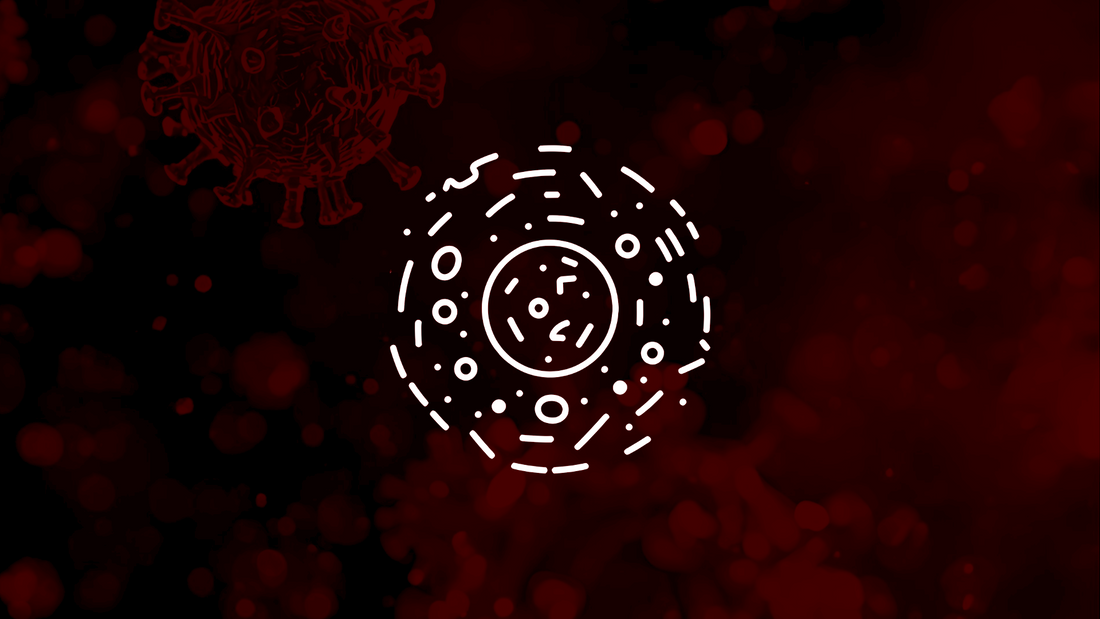High white blood cell count (WBC), or leukocytosis, may indicate conditions such as infections, immune system disorders, injuries, or inflammation.
In this article, we’ll dive deeper into how high WBC and why it matters, as well as treatment options.
Understanding White Blood Cells: The Basics
A healthy body produces around 100 billion leukocytes (also known as white blood cells) every day.
White blood cells only make up about one percent of the blood volume, but they are the body’s first line of defense. There are five types of white blood cells and together, they handle a range of immune functions to keep the body safe and healthy.
In the following sections, we’ll discuss these in greater detail, another of our goals in this article being to help individuals maximize their health.
5 Types of White Blood Cells
There are five different types of white blood cells. Each performs a specialized function and all are necessary to combat foreign substances including viruses, bacteria, fungi, and parasites.
Neutrophils make up about 50-70% of white blood cells. They fight bacterial and fungal infections.
Lymphocytes, including T cells, B cells, and “natural killer cells” protect the body against viruses, cancer cells, and other pathogens.
Monocytes (the precursors to macrophages, or immune cells that live inside tissues), spring into action to destroy debris, dead cells, and bacteria.
Basophils release histamine and other chemicals to protect the body from foreign substances like pollen or animal dander. An ‘allergic reaction’ is the basophils doing their job. This may be somewhat of a reframing of how we think about allergies, but they often occur as a result of our bodies mistaking exogenous things for threats.
Eosinophils combat foreign substances. They activate to protect the body from parasites.
Leukocyte Lives
The CDC (Center for Disease Control) and WHO (World Health Organization state that the WBC life cycle varies widely, which is why it’s important to support the immune system at all times.
All white blood cells (leukocytes) originate in stem cells in the bone marrow. The rate at which they’re produced depends on how many the body needs, and the types of leukocytes needed.
After their “birth” in the bone marrow, WBCs circulate through the blood and lymph, ready to be utilized where needed. WBCs can fit through blood cell walls, so they can actually exit the bloodstream to go where they’re needed to target and destroy a threat to the body.
WBCs typically have a programmed cell death. First-responder neutrophils only live a few hours to a few days. Basophils only live a few hours to a few days. Eosinophils live 8-12 days. Monocytes live 13-20 days. The lifespan of lymphocytes varies: some last for weeks, while some last years to provide long-term immune support.
Each type of leukocyte is produced and mobilized according to the individual’s needs.
Common Causes of High WBC Counts
Sometimes, the body overproduces WBCs. This is a common short-term response to viral, bacterial, fungal, or parasitic infections as the body springs into self-defense mode.
Chronic autoimmune conditions, cancer, and allergies can also spike WBC counts.
Other causes of high WBC counts include chronic inflammation. High WBC count and stress are also related, resulting in high cortisol concentrations, and poor lifestyle choices like smoking.
Short-term, high cortisol levels also elevate neutrophil counts while decreasing lymphocyte counts. If this neutrophil-dominant imbalance persists, it can dysregulate the immune system and cause diseases like Cushing’s syndrome. Long-term, stress and elevated cortisol levels can suppress the immune system, including the formation of new WBCs and increased inflammation.
Athletes who exercise intensely and/or for long periods can also have elevated WBC counts which is why it’s vital to take the patient’s life in context along with blood test results.
Diagnosing and Interpreting High WBC Results
Testing can determine the cause of high WBC counts. Transient spikes are a normal part of the immune response and should return to normal but if it doesn’t, you may experience symptoms, some of which actually mimic symptoms of low white blood cell counts. Symptoms may include frequent or persistent infections, bruising easily, swollen lymph nodes (especially the larger ones in the neck, groin, or armpits), night sweats, chills, nausea and vomiting, difficulty breathing, unexplained weight loss, fever, fatigue, and joint pain.
High WBCs can be a sign of a serious problem so don’t delay in getting tested. You’ll need a complete blood count (CBC) test with differential that shows red and white blood cell counts. It takes several hours or days to receive the results, before a doctor can make a diagnosis.
Doctors look for WBCs in the normal range of 4,500 to 11,000 WBCs per microliter of blood. Anything higher suggests the immune system is actively reacting to a threat; but excessively high numbers, higher than 15,000 WBCs per microliter, may also indicate the need for a retest.
As with any medical test, errors and misdiagnosis can occur. Abnormally high WBCs require context: for example, is the patient an elite athlete? Is the patient taking medications that can cause leukocytosis? Does the patient have a wound or an infection? Is the patient under a lot of stress? Does the patient live a healthy lifestyle?
WBC counts are also different from person to person, depending on their gender, age, overall health, and other factors.
In other words, a CBC is a screening tool that indicates the presence of WBCs as a normal part of the immune response: but it doesn’t confirm that the patient has an infection, cancer, or other medical condition.
Health Implications and Risks of High White Blood Cell Count
The short-term effects of an immune response with high WBC counts may include fatigue, fever, swelling, redness, and pain. This response is normal and should resolve as the infection is cleared and/or wounds heal.
For example, if you come down with the flu, you can expect the body to attack the virus with white blood cells, including B cells and T cells to kill infected cells: this manifests as fever, chills, and body aches since the body is attacking its own damaged cells to prevent the virus from spreading.
This immune response is short-lived and should last no more than 7-10 days, longer if the person is immune-compromised, elderly, or in another high-risk group.
If WBC counts remain high after an infection should have run its course, this could indicate or lead to cardiovascular problems and cancer. High WBC counts can also contribute to diabetes.
Leukocytosis, especially if neutrophil levels remain high, may indicate cancer that has metastasized to the bone marrow.
Leukocytosis can also be a predictor of mortality. Postmenopausal women were observed for an average of 16 years, In this case, it was found that high WBC was positively associated with total mortality as well as mortality from coronary heart disease.
Long-term risks also included systemic inflammation, given that high WBCs indicate inflammation. Inflammation has been implicated as a cause or contributing factor to most diseases.
High-risk individuals include the elderly and people who are immune-compromised including cancer patients on chemotherapy and patients with autoimmune disorders.
How to Reduce High White Blood Cell Counts
Reducing high WBC counts starts with accurately diagnosing the underlying cause. Infections are treated with antibiotics or antivirals. Inflammation is treated with anti-inflammatory medicines. Allergies are treated with antihistamines or corticosteroids. Lifestyle changes, including dietary improvements (specifically, anti-inflammatory diets low in sugar and high in antioxidants), stress management, hydration, and quality sleep are also often prescribed.
Patients with a bone marrow disorder may receive medications to lower WBCs. A procedure called leukapheresis may be used to reduce WBCs.
Self-care can include staying hydrated, managing stress, engaging in moderate exercise such as walking or swimming, getting enough sleep, and practicing good hygiene to avoid infections.
Nutrition and taking care of the gut microbiome is important too. The gut directly affects WBC production. Targeting gut health with red light therapy, nutritional modifications, and lifestyle changes can support gut microbiota that help regulate WBC production.
Some people may be tempted to take herbal supplements in an attempt to naturally lower excessively high WBCs. However, while certain supplements may influence WBC production, but may actually have the opposite effect and lower WBC levels. Self-medicating using supplements is unsafe when trying to lower high WBCs since they may not address (or even worsen) the underlying cause.
Red Light Therapy for Treatment
A novel approach to treating leukocytosis is to use red light therapy in several ways: to help support the gut microbiome, stimulate stem cell production in the bone marrow, and regulate many biological processes.
The treatment involves shining near infrared light onto the skin. The light is then absorbed into the mitochondria of each cell. One benefit is more energy production in the cells, resulting in better cellular performance and health. Another benefit that red light therapy is well known for is the reduction of inflammation.
The BIOMAX PRO Series red therapy panels are medical-grade panels that can be used at home to treat a variety of conditions. BIOMAX PRO panels feature several wavelengths of near infrared light as well as trace amounts of infrared light, to treat deeper tissues including the intestines and bones.
This treatment is all natural, non-invasive, and can be done anytime to support health and treat acute and chronic conditions.



